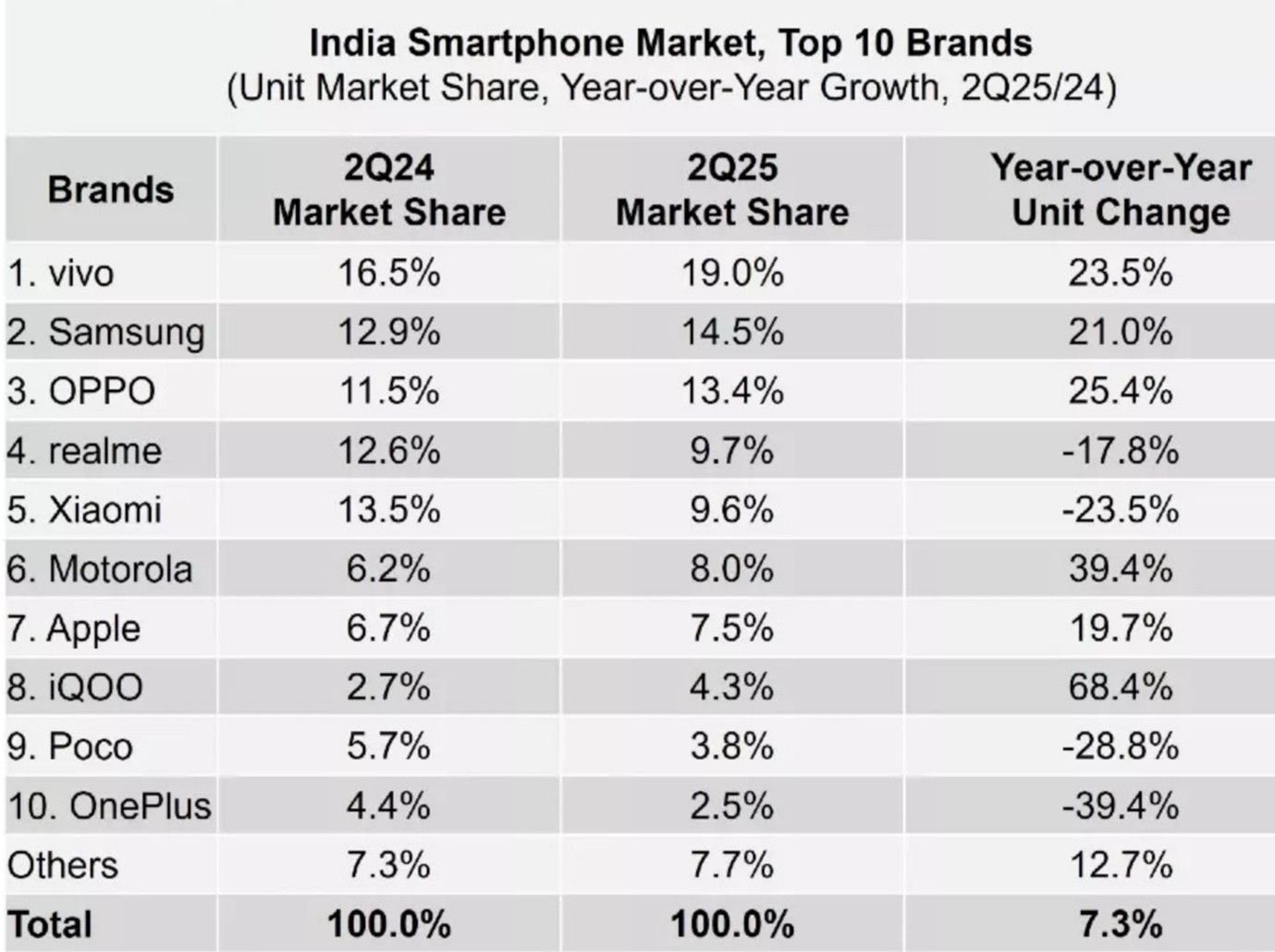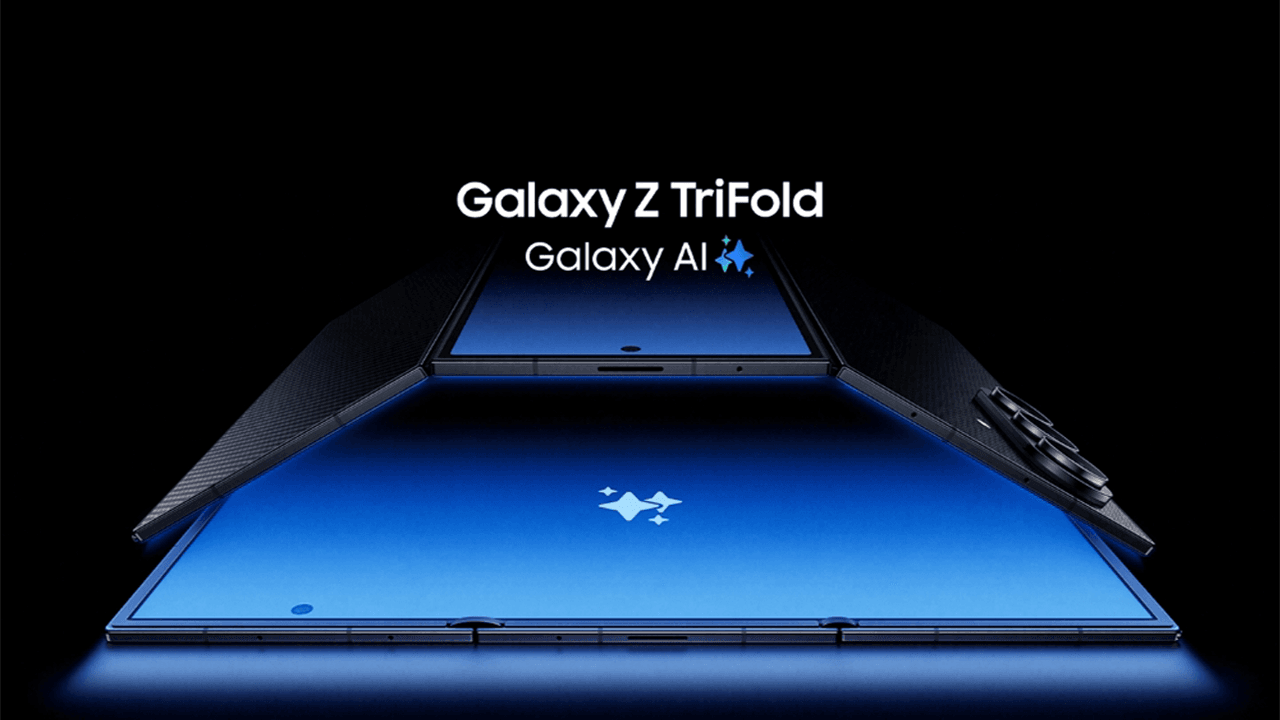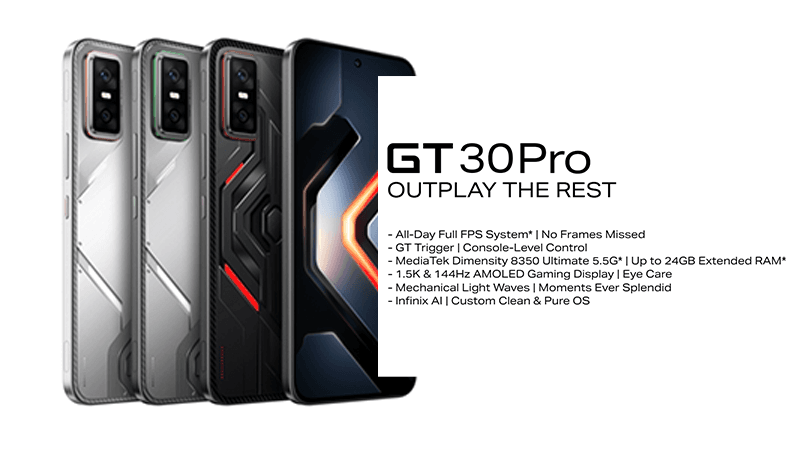Samsung Surpasses Apple in Super-Premium Smartphone Segment for the First Time Ever: IDC Report

For the first time in history, Samsung has overtaken Apple to claim the top spot in the super-premium smartphone segment — devices priced at $800 (around ₹70,000) and above — during the first half of 2025 (1H25).
According to the latest report from International Data Corporation (IDC), Samsung achieved a 49% market share, narrowly surpassing Apple’s 48%, marking a significant milestone in the ongoing rivalry between the two tech giants.
Samsung’s Flagships Drive Record Performance
The report credits Samsung’s surge to the strong sales of the Galaxy S25 Ultra, Galaxy S24 Ultra, and Galaxy S25, which performed exceptionally well in both domestic and global markets. These models, powered by the Snapdragon 8 Gen 3 for Galaxy and enhanced with AI-driven camera features, helped Samsung reclaim leadership in a category long dominated by Apple.
The iPhone 16 and iPhone 16 Plus remained Apple’s top contributors in the Indian market, but Samsung’s diversified flagship lineup ultimately gave it the edge.
Industry analysts say the competition in the $800+ range reflects a shift in consumer preference toward AI-driven functionality, advanced photography, and higher display quality rather than ecosystem lock-ins alone. Samsung’s integration of Galaxy AI features and continued innovation in the Ultra series are believed to have played a decisive role in this turnaround.
India’s Smartphone Market: Segment-Wise Breakdown
The IDC report also offered deeper insights into the overall structure of India’s smartphone market, which shipped 70 million units in 1H25, marking a 0.9% year-over-year growth. The second quarter (Q2 2025) performed especially well, with 7.3% YoY growth and 37 million smartphones shipped.
Entry-Level Segment: Affordable Growth
The entry-level segment (below ₹10,000) saw a robust 22.9% YoY increase, expanding its share from 14% to 16%.
Xiaomi dominated this price band, propelled by the strong sales of its Redmi A4 and Redmi A5 models, which offered improved performance and 5G compatibility at competitive prices.
Mass Budget Segment: Flat Growth, Falling Share
Shipments in the mass budget category (₹10,000–₹20,000) rose modestly by 1.1% YoY, though its overall share dipped from 44% to 42%.
Brands like Vivo, OPPO, and realme collectively accounted for 60% of shipments in this category, continuing to appeal to value-conscious consumers with balanced specs and strong offline presence.
Entry-Level Premium Segment: Slight Decline
The entry-level premium segment (₹20,000–₹35,000) faced headwinds, with shipments declining by 2.5% and market share dropping from 30% to 27%.
Despite the decline, Vivo, Samsung, and OPPO remained dominant players. Interestingly, Motorola saw a multi-fold increase in shipments, jumping to fourth position thanks to the popularity of its Edge and Moto G Stylus series.
Mid-Range Premium Segment: Strong Double-Digit Growth
The mid-range premium segment (₹35,000–₹50,000) was one of the best performers, growing 39.5% YoY, expanding its market share from 4% to 5%.
This growth was primarily driven by OPPO and OnePlus, whose Find X7 and OnePlus 13 series attracted both tech enthusiasts and professionals looking for flagship-like performance at a slightly lower price point.
Premium Segment: Fastest-Growing Category
The premium segment (₹50,000–₹70,000) recorded a staggering 96.4% YoY growth, the highest across all categories. Its share doubled from 2% to 4%, underscoring India’s growing appetite for high-end smartphones.
The iPhone 16 and iPhone 15 together accounted for over 60% of shipments in this range. The iPhone 16 emerged as the most-shipped smartphone model across India in 1H25, contributing 4% of total national smartphone shipments during the period.

Overall Market Trends and Analyst Insights
According to Aditya Rampal, Senior Research Analyst at IDC Asia Pacific, the rebound in smartphone shipments was fueled by a surge of new model launches, price reductions on older devices, and strong offline channel incentives.
“The second quarter of 2025 witnessed a flurry of new model launches across all price segments,” Rampal said. “This, coupled with increased offline margins and aggressive marketing, helped boost overall sales momentum.”
However, IDC cautioned that consumer demand remains fragile, and rising average selling prices (ASPs) could limit sustained growth in the coming quarters. The firm expects a slower annual growth rate as the market stabilizes post-recovery.
Among emerging brands, Nothing posted the highest year-over-year growth at 84.9%, driven by the success of its Phone 3a and 3a Lite, which brought the brand’s signature transparent design and Glyph Interface to a wider audience.
Looking Ahead
IDC forecasts that the second half of 2025 will be critical as brands prepare for the holiday and festive season. With AI-powered smartphones, foldables, and mid-range 5G devices becoming mainstream, competition in both the premium and mass segments is expected to intensify.
Samsung’s historic win over Apple in the super-premium category underscores how quickly consumer preferences and brand dominance can shift — signaling a new era of innovation-led competition in India’s dynamic smartphone market.
More Articles

OnePlus 15: Launch date, price in India, features, specs, and all the details you should know

Introducing Galaxy Z TriFold: The Shape of What’s Next in Mobile Innovation

Infinix GT 30 Pro Launches in India: Gaming Powerhouse with 1.5K AMOLED Display, Dimensity 8300 Chipset

iQOO 15 Review (2025): The Biggest Upgrade Yet in Power, Display & AI Performance

Apple Black Friday Sale in India: Biggest Discounts on iPhone 15, iPhone 16 Pro Max, iPhone 17 & More

Comments